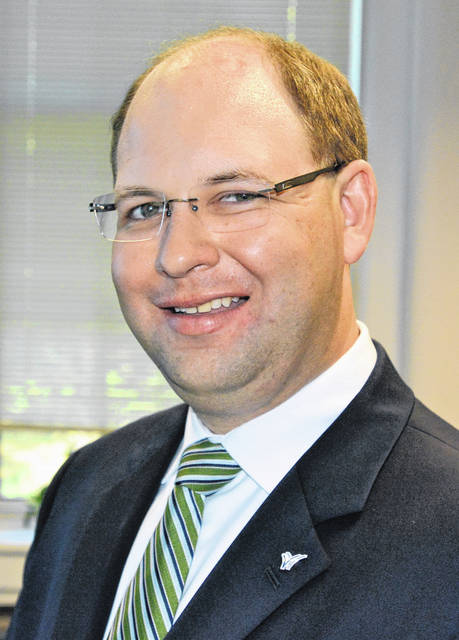
A feed mill, also known as a grain mill, was once a hotbed of community activity. All small communities had one and it was a hub for just about everything.
Farmers would hitch up a team of horses, a tractor, or a semi-truck and head to a small burg, municipality, or village to deliver the grain or to get the seed they needed.
Although … there was always more to it than that. A cup of coffee and friendly faces would greet whomever with a handshake and a smile.
This was all part of the experience of going to the mill. There was one special mill, though, that was the last of its kind in Clinton County. That mill was in New Antioch.
New Antioch was platted in 1851. Small houses were flanked by large and small farms in Green Township.
There was a need for a mill. The New Antioch Mill was built as a flour mill in the mid 1800s and was operated by a family named Durham. As far back as records can go, the first mill was built by John Wesley Durham.
His son John William Durham operated the mill that still stands, until 1949 when it was sold. The New Antioch Mill was not always as it appears today. The site had three mills on it — the current mill and two others — all owned by the Durham family.
One of the mills burned in a fire and it is unknown what happened to the other one.
The current New Antioch Mill, before it was added on to, was a simple two-story wooden building with a small front door. It had five windows — three on the second story and two flanked the entrance door on the first story. A small wooden landing served as a porch on the white building.
The mill was special as it was one of seven flour mills in Clinton County and could turn about a barrel-and-a-half of flour an hour: It was rated a 50-barrel mill.
John Fisher Durham, John William Durham’s son, described the mill as a burr mill because it turned out ground flour, buckwheat flour, and corn meal. A burr mill is one used to grind hard, small food products between two revolving abrasive surfaces separated by a distance usually set by the user.
How the grinding surfaces came to Clinton County is a story in itself. Cooled lava was brought from France and turned into milling stones in Cincinnati, which allowed for the grinding.
The Durham Mill could not only boast those grinding stones, but was also a sawmill. It could cut logs for the area for home building and general building. To say it was the center attraction is an understatement.
Much of the work the mill did was custom work, according to records and firsthand accounts which are on record at the Clinton County History Center.
Farmers would bring in the grain and have it ground into flour or meal. Fred Sabin of Sabin’s Grocery store in Wilmington was the mill’s biggest customer; John William Durham stated this in a newspaper article some 75 years ago. He said that the Sabins would sell 20 barrels of flour a week. He also went on to say that the farmers were very good to the mill.
In 1949 everything changed.
John Janes purchased the mill from John Durham; the mill had been in the family for an estimated 150 years. Then in 1962 the mill sold again to Buckley Brothers, and James Folkert was placed in charge until 1983. Larry Quigley took the reins and a major updating occurred. In his time, they still ground both shelled and whole eared corn, which not too many mills did in 1985.
They handled all the necessities to run a farm — feed, fertilizer, and they even fixed their own equipment.
John Dailey, who worked at the mill, said in a 1985 newspaper article, “The mill is still the center of activity”. People could drink coffee and any news could be heard – true or untrue.
Steve Croghan was the last operator of the mill when it was owned by Buckley Brothers. Today the mill is owned by the Parker family.
Going to any mill was an event. The New Antioch mill was the last of its kind in Clinton County. John Durham said in an undated newspaper article before he sold the mill that there was “too much meddling by the government or the mill would still be operating.”
The mill operated in a simpler time, or maybe it just outlived its time. Either way it served a community which embraced it, and the Durham family was widely known because of it. Three generations — all named John Durham — worked it.
The Buckley family, known for the grain business, picked up where the Janes family left off. With the Parker family now owning the mill, no can say it is not family-owned still.
That is how a mill is built — on family, farming, and a good cup of coffee.
Jonathan McKay is a Clinton County native and a current member of Wilmington City Council.


